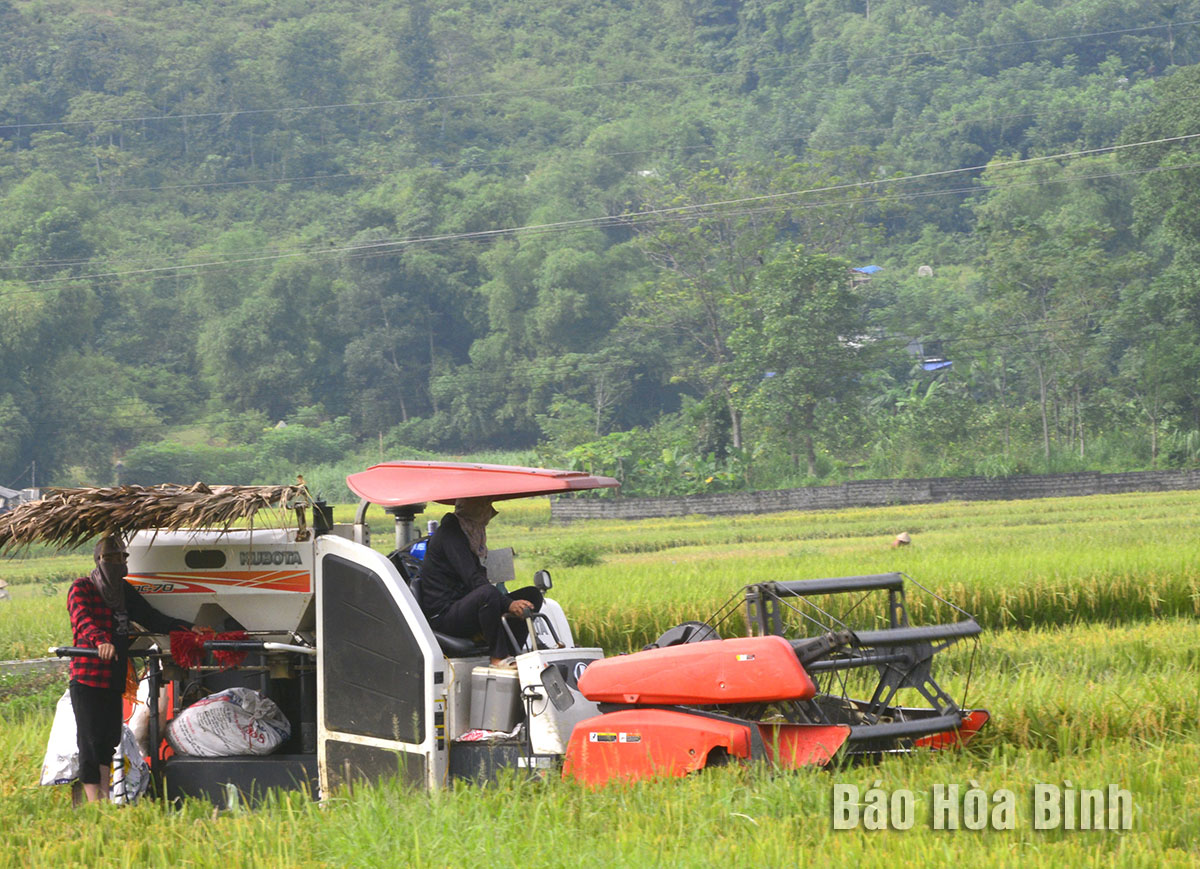
(HBO) – Authorities and people in Kim Boi district have been making efforts to meet the criteria of new-style rural areas.
Farmers in Bo township, Kim Boi district, use machines to improve the efficiency of agricultural production.
Public awareness of building new-style rural areas is increasingly improved, especially in production-consumption linkage, science and technology application, environmental protection, rural landscape improvement, and traditional cultural preservation. As a result, the rural areas’ look gradually changes, production develops, and people's lives constantly improve. In the first nine months of 2023, the district mobilised more than 753 billion VND ( 30.66 million USD) to build new-style rural areas, of which the community’s contribution accounted for 4.1%.
The district has been implementing specific solutions to develop production and increase people's income. The whole district has over 210 ha of production applying VietGAP standards. It is maintaining and developing models and high-quality products such as orange, grapefruit, dragon fruit, and vegetables.
Each commune has a key product such as winter melon and cucumber in Nam Thuong, Kim Lap, Sao Bay, Du Sang; potato in Vinh Dong; citrus fruit in Tu Son, Kim Lap, Vinh Tien, My Hoa; and medicinal plants in Hung Son. The district has also promoted production linkage models and now it has 30 agricultural cooperatives and 17 livestock farms.
By the end of September 2023, on average, each commune in the district met 13.6 criteria. Dinh Tat Thang, head of the district’s Department of Agriculture and Rural Development, said that despite of difficulties remaining, the district targets that by the end of 2023, communes in the whole district will meet 14 criteria of new-style rural areas on average. The district also targets to have one new-style rural residential model, two farming models and two new products meeting the requirements of the One Commune – One Product (OCOP) programme. The district is focusing on mobilising resources to improve the infrastructure system, production and people's lives.
The Standing Board of the Hoa Binh provincial Party Committee has agreed in principle on a proposal by the Standing Board of the Party Committee of Hoa Binh city to gather feedback on the city’s 1:2000 zoning plan, which forms part of its broader urban development strategy.
Hoa Binh province has made notable progress in public administration reform and digital government development, with the satisfaction index among citizens and businesses reaching over 84%, according to recent government evaluations.
Thanks to great efforts by local authorities in recent times, the governance and public administration performance of Mai Chau district has been significantly improved.
In the afternoon of June 6, the Party Committee, the People's Council, the People's Committee and the Fatherland Front of Lac Son district solemnly held a meeting to celebrate the 139th anniversary of the district's founding (1886–2025) and the 79th anniversary of the establishment of the district's Party Committee (1946–2025). There was the attendance of Mr. Bui Van Thang, the Vice Chairman of the Provincial People's Council; Mr. Quach Tat Liem, the Vice Chairman of the Provincial People's Committee; Ms. Dang Bich Ngoc, the Deputy Head of the National Assembly Delegation of the province; as well as the former leaders of the province and district through various periods, who are the natives of the district.
Implementing the Politburo’s Resolution No. 57-NQ/TW on breakthroughs in science – technology, innovation, and digital transformation is a golden opportunity for the northern mountainous province of Hoa Binh to renew growth model, improve competitive edge and shorten digital gap.
Resolution 57-NQ/TW, issued by the Politburo on December 22, 2024, identifies sci-tech, innovation, and digital transformation as strategic breakthroughs to build a developed and prosperous nation. In Hoa Binh province, this spirit is not just a slogan, it’s being put into action through concrete initiatives that form a "new development triangle”: digital citizenship, digital economy, and digital administration.



